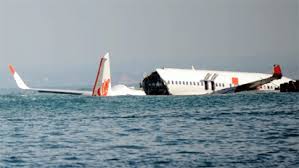Boeing 737 MAX Accountability: Shareholder Litigation Against Boeing Board & House Transportation Committee Issues Scathing Report (Part I of II)

Boeing is the new poster child for corporate governance failures and misconduct. Move over Wells Fargo, General Motors, Volkswagen, Novartis, Siemens and Wal-Mart, and make room for Boeing. Like General Motors and its ignition switch scandal, innocent consumers were killed as a direct result of corporate governance failures and blatant misconduct.
Boeing’s 737 MAX was rolled off the factory floor with fanfare and great expectations for success. The FAA approved the airplane for operation in 2017. It was a modern fuel-efficient airplane. No one ever expected the tragedy that would occur over a six month period – the first MAX crash of Lion Air flight in Indonesia on October 28, 2018, and the Ethiopian Airlines crash on March 10, 2019. A total of 346 innocent passengers were killed in these two crashes. Boeing is now subject to multiple investigations and lawsuits around the world.
The 737 MAX suffered two significant crashes within a five-month period. The common component in both of the accidents was Boeing’s new flight control feature – the Maneuvering Characteristics Augmentation System or MCAS. Boeing developed the MCAS to address stability issues in certain flight conditions as a result of the plane’s new, larger engines and their relative placement on the 737 MAX compared to an earlier 737 model.
Shortly after the second crash on March 13, 2019 of the Ethiopian Airlines Boeing MAX, the FAA grounded the 737 MAX, following similar grounding orders in China, the EU, Canada and others. Boeing argued that s simple software fix for MCAS would allow the 737 MAX to return to service quickly; unfortunately, the aircraft is still grounded because of newly discovered safety issues emerging.
Boeing Shareholder Litigation
Boeing is subject to shareholder derivative suits challenging its board oversight performance. If ever there was a case where a board violated Caremark and Ritter standards, Boeing’s board displayed an utter disregard for ensuring proper safety oversight and monitoring of safety controls.

Boeing shareholders recently filed a second, more comprehensive complaint challenging the Boeing board for its faulty performance. The shareholder’s lawsuit cites numerous internal company documents that demonstrate the board failed to exercise proper oversight over management and to respond specifically to MAX engineering problems.
The plaintiffs in the lawsuit are New York and Colorado public pension funds. According to the plaintiffs, Boeing’s board lacked an organized mechanism to identify and track safety concerns.
After the initial crash in October 2018, Boeing directors did not meet for nearly a month in an optional conference call. After the second crash, the board created an interim airplane safety committee which held several meetings with sparse attendance by board members. The lawsuit alleges that the board was not briefed on any safety issues until weeks after the the second, Ethiopian Airline crash.
In response to emerging safety concerns, Boeing’s then-CEO, Dennis Mullenberg, allegedly misled directors by insisting the Boeing 737 MAX was safe, and the board consciously disregarded Mullenberg’s failure to provide factual reports about the reasons for the crashes. The board passively failed to ask Mullenberg any questions to test and verify his conclusory statements to the board.
House Transportation Committee Investigative Report
Adding to Boeing’s challenges, the House Transportation Committee issued its long-pending investigation report. The picture painted in the report is not pretty.
After an exhaustive 18 month investigation, the House Transportation Committee concluded that there were multiple missed opportunities to ensure a safe MAX design and reverse flawed technical design criteria, faulty assumptions about pilot response times and production pressures.

The FAA also bears responsibility for failing to adequately review and correct Boeing’s MAX 737 errors and safety flaws. The FAA failed in its oversight of Boeing and its certification of the aircraft.
The 737 MAX crashes were not the result of a singular failure, technical mistake or mismanaged event. Instead, the two horrific crashes were the culmination of a series of faulty assumptions by Boeing’s engineers, a lack of transparency on Boeing’s management, and grossly inefficient regulation and oversight by the FAA.















